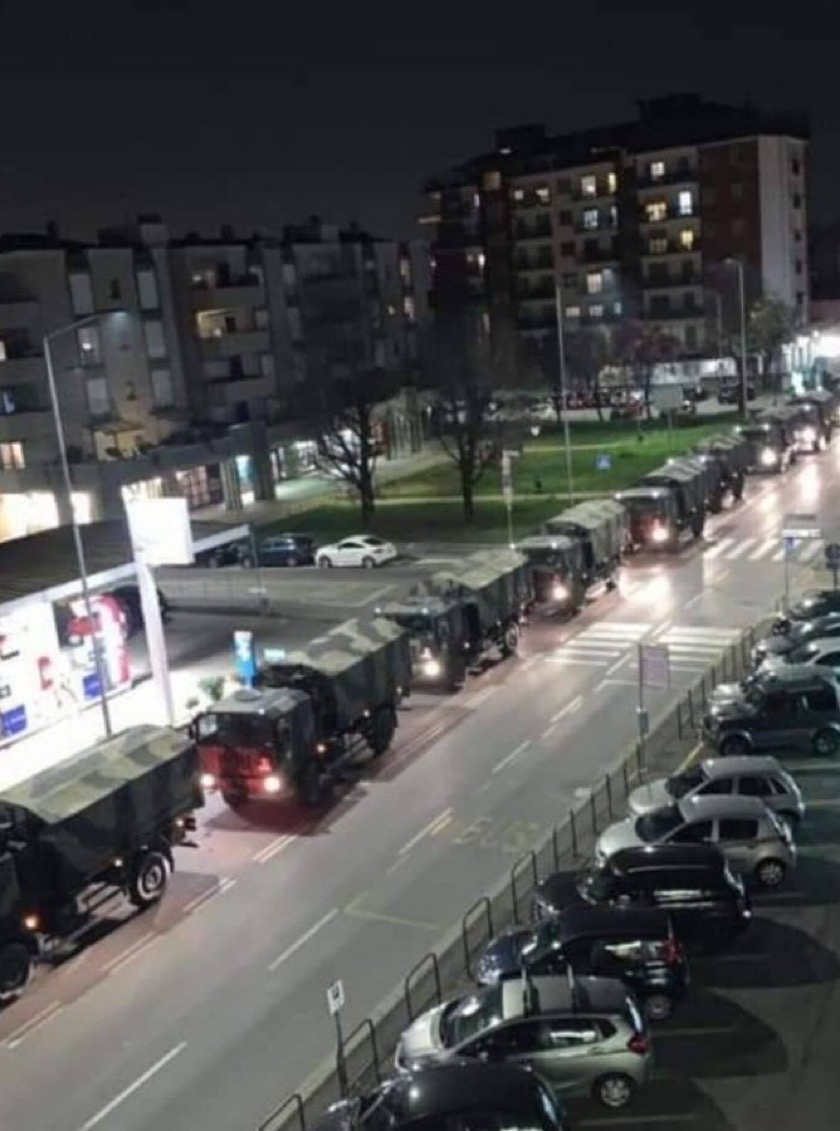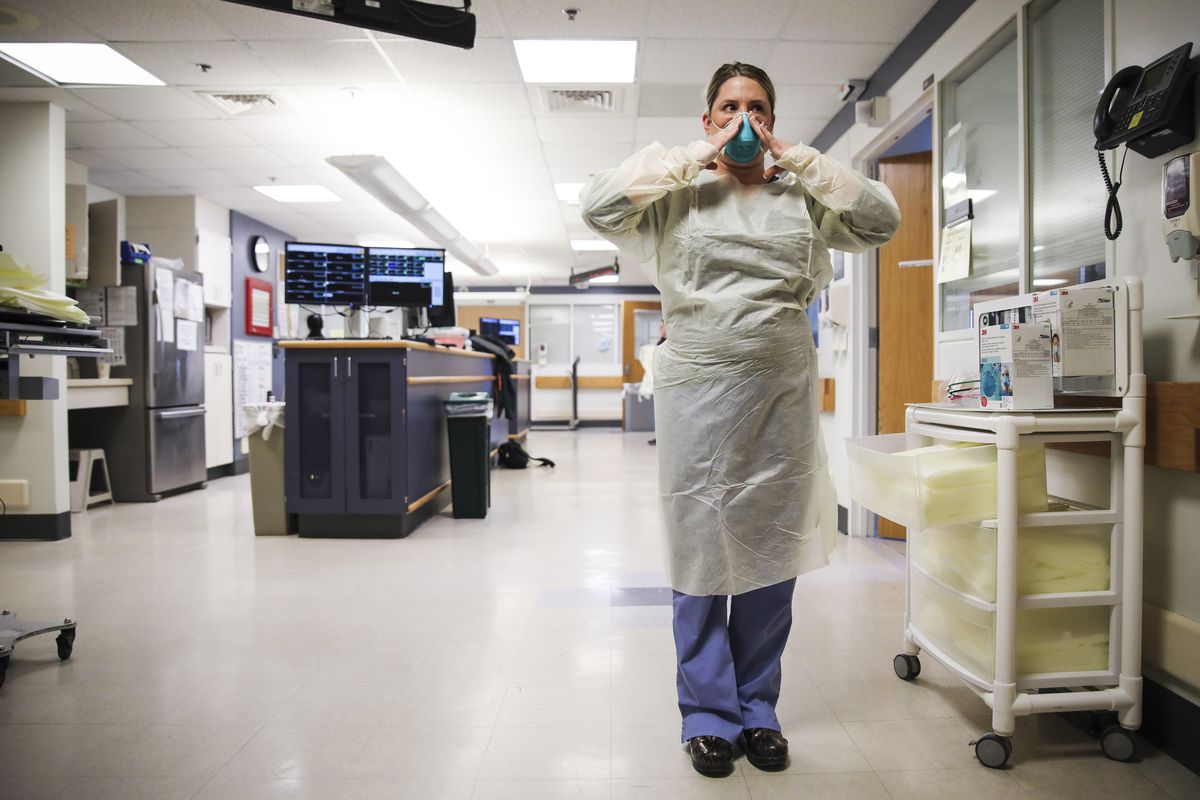With (maybe) a hint of an uplifting era to come
19 March 2020 (Brussels, Belgium) – Tomorrow I’ll continue my series on the coronavirus pandemic with Part 3, the politics of pandemics, which might be my longest bit so far. A rough draft went out last night and all 35 people who received it … everyone … provided lengthy comments, corrections, suggestions. All good (damn it!) so I need some time to make adjustments.
Over the last two says I have received a flood of information from hospitals (three of my nieces are nurses on the front line of this) and my media team collected 172 articles on hospitals handing the pandemic. So, through the wonder of our AI software, I have been able to consume all of it to provide this mash-up.
I’ll just start out with this quote from a Wall Street Journal article (it is behind their paywall so I have taken the liberty of uploading it to my SlideShare; link below):
Bergamo shows what happens when things go wrong. In normal times, the ambulance service at the Papa Giovanni hospital runs like a Swiss clock. Calls to 112, Europe’s equivalent of 911, are answered within 15 to 20 seconds. Ambulances from the hospital’s fleet of more than 200 are dispatched within 60 to 90 seconds. Two helicopters stand by at all times. Patients usually reach an operating room within 30 minutes, said Angelo Giupponi, who runs the emergency response operation: “We are fast, in peacetime.”
Now, people wait an hour on the phone to report heart attacks, Dr. Giupponi said, because all the lines are busy. Each day, his team fields 2,500 calls and brings 1,500 people to the hospital. “That’s not counting those the first responders visit but tell to stay home and call again if their condition worsens,” he said.
Ambulance staff weren’t trained for such a contagious virus. Many have become infected and their ambulances contaminated. A dispatcher died of the disease Saturday. Diego Bianco was in his mid-40s and had no prior illnesses.
The full article gives a glimpse of the apocalypse that is overwhelming hospitals. You can access it by clicking here. And I’ll repeat what I have said in my series: we’re terrible at comprehending exponential growth (which epidemics are in their early stages), and they quickly overtake our arithmetically-scaling facilities. And we cannot yet comprehend this isn’t ending in a few weeks or even a few months. The deaths have barely started in the U.S. Neither has the economic hardship and desperation.
My Italy network has been Tweeting and also sending me private reports. The military arrived in Bergamo last night with 70 cargo trucks to take the coffins. There is simply no more space for them in any of the hospitals or morgues.
Few people have ever seen anything similar. Everybody has been showing this photo to fight all the reports minimising the situation. Based on information published by the Johns Hopkins Coronavirus Center (considered by medical professionals to be one of the few sources for accurate data):
-The current (18 March 2020) mortality in Italy for COVID19 infected patients is 8.3%. Almost 1:10 have died.
-In the U.S., in Washington state, the current (18 March 2020) mortality is >5% mortality (1:20 with the infection will die)
-To remind everyone, the seasonal flu mortality is 0.1% (1 of 1000 die)
Note: as I did in Part 1 and Part 2 of my series, I will address the “reliability of data” issue at the end of this post.
From my niece, a nurse at a major NYC hospital. Similar to two other stories I have received from NYC:
-I was trained in general pathology but now my entire department has been shifted to coronavirus response. Blood pathologists also being moved so normal blood testing and routine surgeries now suspended.
-We are dangerously short on supplies which is simply unheard of for this hospital. Our two floors are 40 people, and we were given two boxes of masks for a total of 150. The hospital told us we need to make them last for at least two weeks. That’s roughly 3.75 masks per health worker
-On top of this, the hospital just changed their policy on workers exposed to patients with the virus. Normally, workers exposed would be sent home for quarantine. Now, they are to continue coming to work and just wear a mask
-Reason? Because if they quarantined all that were exposed to coronavirus we’d have no doctors or nurses left to treat patients
-We are the best NYC hospital and we haven’t the supplies or personnel to adequately address this threat
From my godson who is a chief nurse at a hospital in Boston:
-Our three floors are now full with non-COVID patients but we have been advised to start opening beds for the imminent COVID surge. The numbers in the Boston area are high but underreported by the media.
-But multiple patients of mine CANNOT leave the hospital because they’re awaiting prior “authorisations” from commercial insurers. Insurance companies are clogging up the system in the middle of a damn pandemic.
-I have always said this pandemic will expose global health inequities but will certainly reveal the U.S. health system’s inefficiencies. I’d love to tell you about how greed dictates health care in so many situations but why bother. I have work to do.
-But why oh why our doctors are wasting time arguing with private insurers. A prior authorization essentially asks, “Are you sure you know what you’re doing?” Well, they do. It’s their job. Sign off, damn it! God, the red tape.
-Our most critical issue: a shortage of mechanical ventilators, essential for those suffering severe cases of COVID19, ensuring that patients can continue to breathe when their lungs fail. I have been watching the regions where the coronavirus has already spread widely – China and Italy, mostly – and they have struggled to provide necessary care as critical cases outstripped supplies of the machines.
A brief note on ventilators. The shortage was a huge issue in China and Korea, and it is now in Germany and in Italy. It may become so in the U.S. I had a brief chat with the sales rep of a U.S. manufacturer. Medical device manufacturing is highly regulated, depends on proprietary global supply chains, and requires significant expertise to ramp up and run. It’s absolutely critical, of course, that the machines function safely. So the suggestion of some politicians in the UK and the US that car makers or other major manufacturers “could swing into action and save the day” is comical. Even existing ventilator manufacturers with deep experience and approvals in hand still face crucial limits in ramping up production. Constraints include the size of manufacturing plants and the availability of critical components … many of which originate in China.
Kenneth Lutchen, dean of Boston University’s College of Engineering and a professor of biomedical engineering, who is focused on developing safer mechanical ventilators, has been a media favorite of late so some clips from his recent interviews:
Presumably at some point this crisis will play itself out but by my estimation, not for a year. The present wave will peak … if everybody’s math is correct … by early summer, but then wave two will hit in the fall. I am not tracking vaccine development so I do not know how that might impact.
Here is the issue: adding factory capacity costs a lot of money up front, creating real risks for these businesses, since it’s possible hospitals won’t need as many ventilators as the worst-case scenarios suggest. So who will pay for all the extra ventilators even if the company can ramp up? When the crisis does play itself out do we then have hospitals with far more ventilators than they need until the next crisis?
There needs to be an incentivized business model to hit the go button for ramping up manufacturing, and government likely needs to figure out how to successfully engage. People in this business also assert that governments need to step in to provide the necessary certainty for companies to accelerate production.
Chris Kiple, chief executive of Ventec Life Systems, said in an article published by Forbes this past Sunday that they could boost production five-fold over the next three to six months. But he stressed that they’d need the contracts to do so. And while orders have spiked in China, Italy, and Germany because those governments are on top of things, that hasn’t happened yet in the US. Trump could invoke the Defense Production Act of 1950 to boost manufacturing of critical medical supplies. That act, passed during the Korean War, grants the president broad powers to direct businesses to produce specific goods that are critical to the national defense.
Before I close out this post …
As I noted in Part 1 and Part 2 of my series, the reliability of data in this whole pandemic situation has always been an issue. Those of us who are data junkies know this: unless you understand the data, understand its reliability and nonreliabiity, then your data science, your analysis will be meaningless.
Worse, as Kevin Gray noted in a very good Linkedin thread “there is a shibboleth of our age that, whatever the problem, we must do something and do it quickly. IMO, this is both mindless and dangerous.”
Note: Kevin is President of Cannon Gray LLC, a marketing science and analytics company that partners with marketing research agencies, consultants, ad agencies and clients located in many regions of the world. he is heavily followed on Linkedin.
And the 24-hour news cycle reinforces this. A great quote from a UK source in my Twitter feed: “If we’d had constant 24-hour, rolling-news during the war, like we do now, we’d have surrendered in 1940”
In Kevin’s Linkedin thread which I noted above, we had a riveting discussion on the issue that serious data deficiencies should not be ignored on the grounds that “it’s the best we have,” even when the stakes are low. This does not mean, of course, that we should ignore the data we have and do nothing, nor should officials dismiss the costs and potential risks of their actions. Human existence requires many tradeoffs and judgement calls. But as one comment noted:
I totally agree with all of your arguments. But properly collecting and appropriating data would mean setting up a large scale RCT (Randomised controlled trial). Explain that to a panicking people.
Kevin guided us to an excellent piece which I highly recommend. It’s titled “A fiasco in the making? As the coronavirus pandemic takes hold, we are making decisions without reliable data” and you can access it by clicking here. Another member of my Linkedoin coterie, Rui Vale, summarised the key points:
“The data collected so far on how many people are infected and how the epidemic is evolving are utterly unreliable. Given the limited testing to date, some deaths and probably the vast majority of infections due to SARS-CoV-2 are being missed. We don’t know if we are failing to capture infections by a factor of three or 300.”
“That huge range [0.05% to 1%] markedly affects how severe the pandemic is and what should be done. A population-wide case fatality rate of 0.05% is lower than seasonal influenza.”
“It’s like an elephant being attacked by a house cat. Frustrated and trying to avoid the cat, the elephant accidentally jumps off a cliff and dies.”
“The most valuable piece of information for answering those questions would be to know the current prevalence of the infection in a random sample of a population and to repeat this exercise at regular time intervals to estimate the incidence of new infections. Sadly, that’s information we don’t have.”
“If we decide to jump off the cliff, we need some data to inform us about the rationale of such an action and the chances of landing somewhere safe.”
There’s rarely comprehensive accurate information for any decision, but this is an extreme case where particularly big decisions are being made with particularly little information. This is an excellent article which identifies some of the information gaps, identifies some of the feasible magnitudes of error and identifies some of the likely sources and directions of bias. It also contains a helpful analogy with regard to the elephant dying as a result of its manoeuvres to avoid an attack by a domestic cat. This article is without a doubt the best I’ve read on the subject. People are mixing and matching inaccurate statistics that measure different things and using this mish mash to make irrational predictions. Unfortunately, this weaponizing of false and misleading statistics seems to have become the norm.
Tomorrow I’ll publish Part 3 of my series, focused on the politics of pandemics. My wrath shall not be totally focused on the U.S. But a good part of it will be. Trump pushed through huge tax cuts for corporations. Those corporations that participated spent all that money on stock buybacks … rather than investing in their workers, as they promised. Now the taxpayer is expected to bail those corporations out. If the U.S. doesn’t come out of this recession convinced that rich people need to be taxed more and that workers need to be paid a living wage, then it deserves to be the failing empire that it is.
But let’s end on an upbeat(?) note. I keep thinking, if the kids survive this they will be generating literature and art shaped by this experience for the next 60-70 years. And it will be amazing, wrenching stuff. But oh, so glorious.
“Hope in a Prison of Despair”
Evelyn De Morgan (1855–1919)
For those of you who had the opportunity to see the exhibit two years ago in either London or Paris, my guess is you love this painting as much as I do.
This is De Morgan’s most famous allegorical, Pre-Raphaelite painting showing Hope as a woman (or very young man; there is a debate) holding a lamp, entering the dungeon where Despair is shown as another human figure bowed down with grief. Hope’s saint-like halo suggests the comfort brought by religious faith.
Side note: her paintings rely on a range of metaphors (such as light and darkness, transformation, and bondage) to express what several scholars have identified as supreme feminist content for which she became famous. She boycotted the Royal Academy and signed the Declaration in Favour of Women’s Suffrage in 1889. There is a wonderful collection of her work in Guildford, Surrey, UK.




